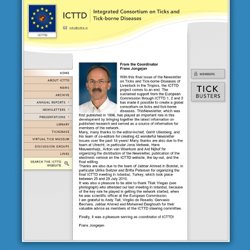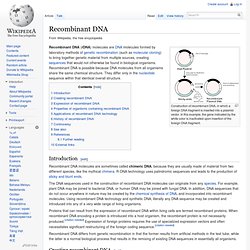

CBGP : Centre de Biologie et de Gestion des Populations. Home. With this final issue of the Newsletter on Ticks and Tick-borne Diseases of Livestock in the Tropics, the ICTTD project comes to an end.

The sustained support from the European Commission through ICTTD 1, 2 and 3 has made it possible to create a global consortium on ticks and tick-borne diseases. ThisNewsletter, which was first published in 1996, has played an important role in this development by bringing together the latest information on published research and served as a source of information for members of the network. Many, many thanks to the editor-inchief, Gerrit Uilenberg, and his team of co-editors for creating 42 wonderful Newsletter issues over the past 14 years! Many thanks are also due to the team at Utrecht, in particular Jona Verbeek, Hans Nieuwenhuijs, Anton van Woerkom and Ard Nijhof for organizing the distribution of the Newsletter, publication of the electronic version on the ICTTD website, the lay-out, and the final editing.
Frans Jongejan. NSF-EID Lyme disease gradient project. NSF Emerging Infectious Disease Award EF-0914476 Lyme disease (LD) is the most common vector-borne disease of humans in the U.S., with most cases acquired from the bite of nymphal blacklegged ticks (= ‘deer ticks’).

These ticks are found throughout the eastern U.S. (see map), yet 93% of LD cases occur in ten Northeast, Mid-Atlantic and Upper Midwest states. Various explanations have been proposed for the puzzling absence of LD in some areas where blacklegged ticks occur, but no agreement has been reached – contributing to uncertainty and confusion among citizens and healthcare providers faced with expanding tick populations in many parts of the U.S.
More about this map This newly-funded 4-year research program is a collaborative effort -- led by Michigan State University and involving The University of Tennessee, The University of Montreal, Hofstra University, Georgia Southern University, The University of Rhode Island, and the U.S. Please contact Dr. Jean I. Tree of Life Web Project. Accueil - Tour du valat. Livro The Cerrados of Brazil (completo) - shared folder - partage et stockage gratuits de fichiers. Recombinant DNA. Construction of recombinant DNA, in which a foreign DNA fragment is inserted into a plasmid vector.

In this example, the gene indicated by the white color is inactivated upon insertion of the foreign DNA fragment. Recombinant DNA (rDNA) molecules are DNA molecules formed by laboratory methods of genetic recombination (such as molecular cloning) to bring together genetic material from multiple sources, creating sequences that would not otherwise be found in biological organisms.
Recombinant DNA is possible because DNA molecules from all organisms share the same chemical structure. They differ only in the nucleotide sequence within that identical overall structure. Introduction[edit] The DNA sequences used in the construction of recombinant DNA molecules can originate from any species. Proteins that can result from the expression of recombinant DNA within living cells are termed recombinant proteins. Creating recombinant DNA[edit] PROBIO. MMA » Secretaria de Biodiversidade e Florestas » Ano Internacional da Biodiversidade » PROBIO » Mapa das Áreas Prioritárias {*style:<b> PROBIO. Publicações : Associação Caatinga. XXIX Congresso Brasileiro de Zoologia - 5 - 9 Março 2012. Centro de Convenções.
Bienvenue sur le site du GEMI. Laboratoriodeherpetologia. Free conservation biology textbook: Conservation Biology for All. Oxford University Press makes conservation biology textbook by some of the world's most prominent ecologists and conservation biologists available as free download Conservation Biology for All provides cutting-edge but basic conservation science to a global readership.

A series of authoritative chapters have been written by the top names in conservation biology with the principal aim of disseminating cutting-edge conservation knowledge as widely as possible. Important topics such as balancing conversion and human needs, climate change, conservation planning, designing and analyzing conservation research, ecosystem services, endangered species management, extinctions, fire, habitat loss, and invasive species are covered.
Numerous text boxes describing additional relevant material or case studies are also included. The global biodiversity crisis is now unstoppable; what can be saved in the developing world will require an educated constituency in both the developing and developed world.